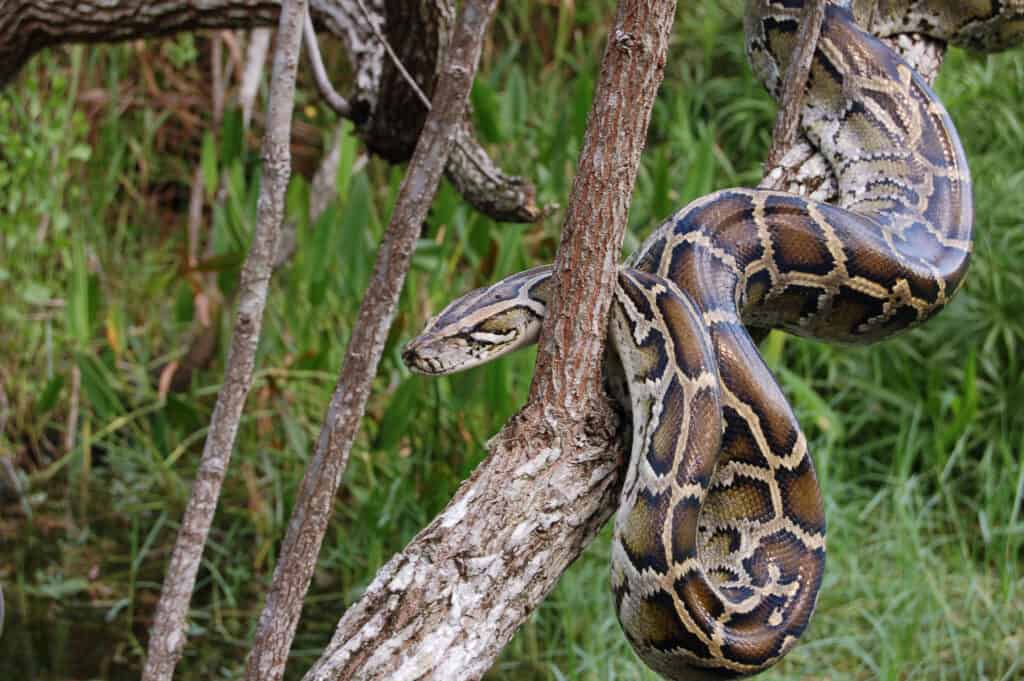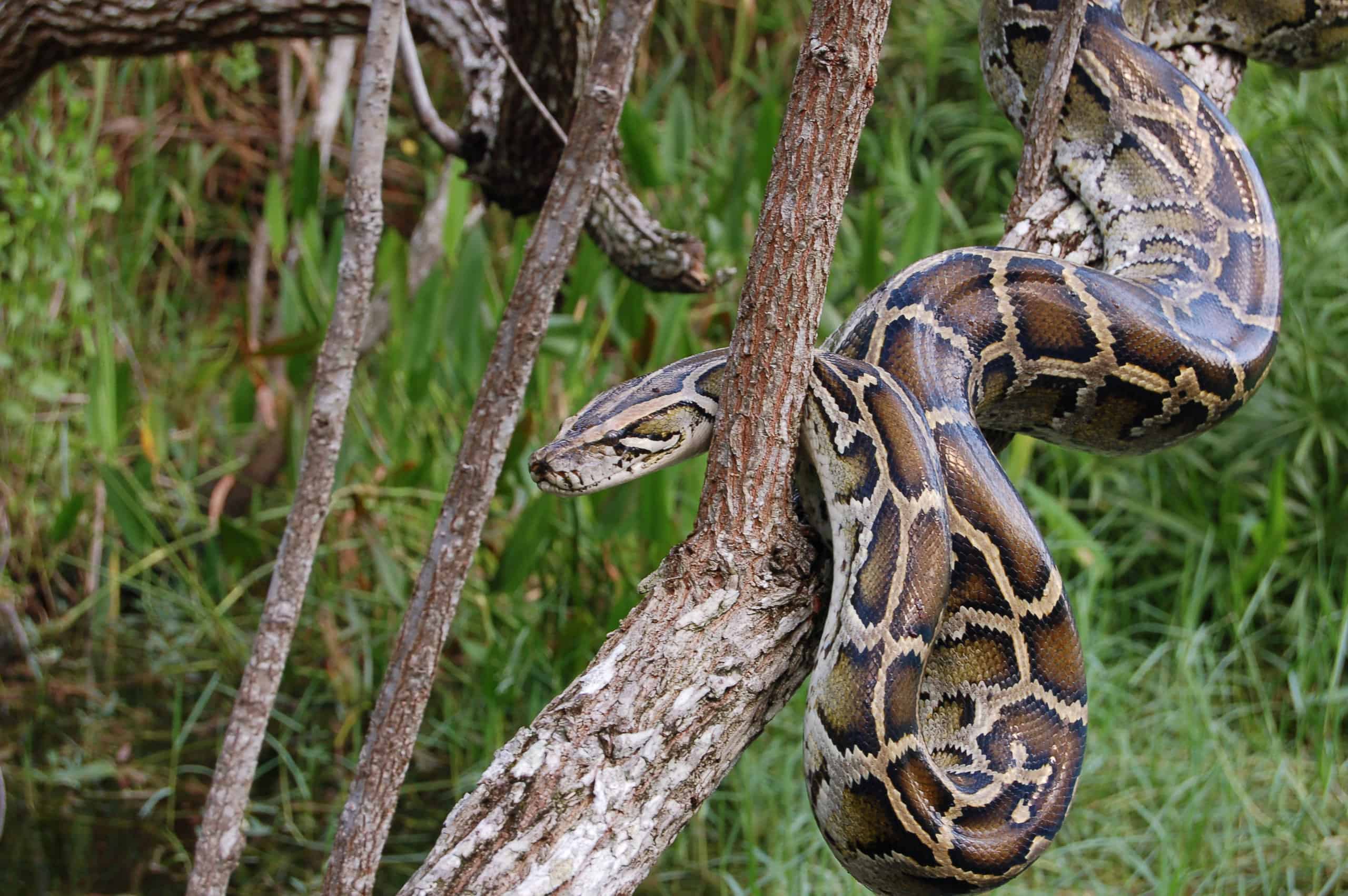During this year’s Florida Python Challenge, one family bagged the ultimate grand prize — $10,000.
As the ultimate grand prize winner, Paul Hobbs removed 20 Burmese pythons from the Florida Everglades — easily beating the second runner-up’s 14 pythons.
Paul Hobbs is no stranger to the Python Challenge. He started competing in the challenge with his father as a child. Hobbs says that it has become a family tradition and this year, he brought his father, brother, and son.
Other python hunters also took home prizes that ranged from $1,000 to $7,500 — for everything from the biggest python to the second runner-up prize of $7,500.
Why the Florida Python Challenge?
With prizes that range from $1,000 to $10,000, the Florida Python Challenge attracted over 1,000 people from 35 U.S. states and even Belgium. One prize was for the longest python — a 10-foot, 9-inch-long serpent caught by novice python hunter Amy Siewe.
The python challenge is Florida’s answer to a difficult problem: how to remove thousands of invasive Burmese Pythons from Florida’s Everglades. Created by the Florida Fish and Wildlife Conservation Commission and sponsored by companies and conservation groups, the challenge rewards people for capturing and removing as many pythons as possible.
Why Are Burmese Pythons a Problem?
It’s a sad situation. In truth, these snakes do not belong in Florida — they’re native to Southeast Asia in Burma and surrounding areas. Yet, the state’s warm, humid environment makes it a perfect habitat for pythons.
Since the largest predators in Florida are alligators, big cats, and bears, the invasive pythons can tip nature’s balance.
Over the years, Burmese pythons have bred in the area, preying on local wildlife. They are capable of taking larger prey than the native snakes and, according to officials, Burmese pythons have decimated raccoon, opossum, rabbit, and other native animal populations.

Burmese Pythons are invasive in the Everglades, some say they have decimated local species like raccoons and opossums.
©Heiko Kiera/Shutterstock.com
How Big Do Burmese Pythons Get?
Although they’re popular pets, Burmese pythons live for decades and easily reach 20 feet long and weigh 200 pounds. These beautiful snakes rapidly outgrow small enclosures, and some people wind up releasing them when they become too large to handle.
Males are smaller than their female counterparts, but they’re still big snakes. A large adult female can lay upwards of 100 eggs every time she breeds, compounding the problem in Florida.
How Did Burmese Pythons Get to Florida?
Florida’s Burmese python problem is not a secret.
It was caused by a few irresponsible pet owners and a hurricane. Although it may have begun in the 1980s when a few pet snake owners released their not-so-small snakes. However, the biggest problem is Hurricane Andrew’s awful legacy. In 1992, Hurricane Andrew slammed into Florida’s coast south of Miami as a category 5 hurricane. It destroyed a breeding facility, releasing thousands of Burmese pythons into the environment — an instant breeding population.
Discover the "Monster" Snake 5X Bigger than an Anaconda
Every day A-Z Animals sends out some of the most incredible facts in the world from our free newsletter. Want to discover the 10 most beautiful snakes in the world, a "snake island" where you're never more than 3 feet from danger, or a "monster" snake 5X larger than an anaconda? Then sign up right now and you'll start receiving our daily newsletter absolutely free.
Thank you for reading! Have some feedback for us? Contact the AZ Animals editorial team.








